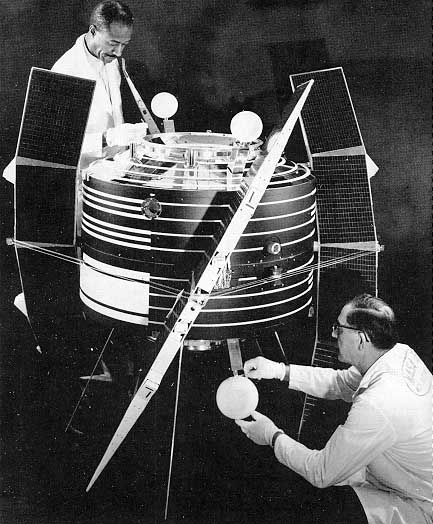RAE (Radiation Astronomy Explorer)

RAE-1 (Explorer 38).
RAE (Radiation Astronomy Explorer) 1 and 2 were two NASA satellites that investigated low-frequency radio emissions from the Sun and planets as well as from galactic and extragalactic sources. RAE was a subprogram of the Explorer series.
| spacecraft | date | launch vehicle | launch site | orbit | mass (kg) |
| Explorer 38 | Jul 4, 1968 | Delta J | Vandenberg | 5,835 × 5,861 km × 120.9° | 190 |
| Explorer 49 | Jun 10, 1973 | Delta 1914 | Cape Canaveral | lunar orbit | 328 |
RAE-1 (Explorer 38)
The primary objective of RAE-1 was to monitor low-frequency radio signals originating in our solar system. The spacecraft measured the intensity of celestial radio sources, particularly the Sun, as a function of time, direction, and frequency. The onboard experiments consisted of four step-frequency Ryle-Vonberg radiometers, two multichannel total power radiometers, one step frequency V-antenna impedance probe, and one dipole antenna capacitance probe.
RAE-2 (Explorer 49)
The primary objective of RAE-2 was to measure low-frequency radio noise from galactic and extragalactic sources and from the Sun, Earth, and Jupiter. It was placed into lunar orbit. The experiment complement consisted of two Ryle-Vonberg radiometers, three swept-frequency burst receivers, and an impedance probe for calibration.


